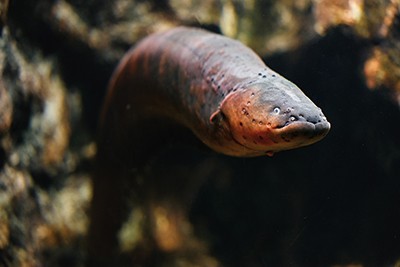Eel-Inspired Power Source Has Potential

By Kylie Wolfe
Scientists have spent hundreds of years trying to mimic the way electric eels generate electricity. Using plastic sheets similar to bubble wrap to imitate the eels’ mechanism, graduate students at the University of Fribourg in Switzerland have done just that.
A Shocking Creature
Electric eels are somewhat of a scientific phenomenon, using their electric touch to zap prey and ward off predators. They store and generate electricity with thousands of cells called electrocytes that line up in stacked rows throughout the majority of their abdomen. Connecting each cell are ion channels that allow the cells to communicate with each other. When an eel wants to release an electric shock, some ion channels open and some close to build up positive and negative charges throughout the body. This creates a charge difference that triggers the movement of electricity through the eel’s cells, collectively producing an electric charge.
Imitation is Flattery
To replicate this natural process, researchers developed an artificial organ out of two flexible sheets of clear plastic similar to bubble wrap. Each “bubble” contains a different color-coded gel. One sheet has red bubbles that contain salt water and blue bubbles with freshwater. A second sheet has yellow bubbles containing positive ions and green bubbles with negative ions.
When pressed together, the bubbles settle between each other, which allows the red and blue dots to act like channels that let charged particles flow between the green and yellow dots. Again, this movement of ions is what produces a charge difference and ultimately generates electricity.
Unique Applications
Scientists tested the strength of these artificial power sources and found that they can generate up to 100 volts, which is similar to an electric current in a U.S. wall outlet. These colorful sheets are also cost effective and convenient. The charged gels can be printed using a 3D printer, and they can generate electricity with a simple squeeze.
What makes these power sources even more useful is their ability to produce a strong, but small amount of power, even when exposed to water. This gives them the potential to power pacemakers or soft robots that explore harsh environments underwater, like along the ocean floor or near a volcano.
Discussion Questions
- Compare and contrast the natural process and the synthetic process of generating electricity in eels versus an artificial organ.
- What other applications could this power source have in the future?
- Discuss the pros and cons of this artificial power source and others like it.
Vocabulary
- Electrocyte
- Ion
- Ion Channel
- Electric Current